Bzzz!
Continuing the description of the birds that live near my house, one cannot fail to note the family of hoopoes, which regularly visits our swallows.
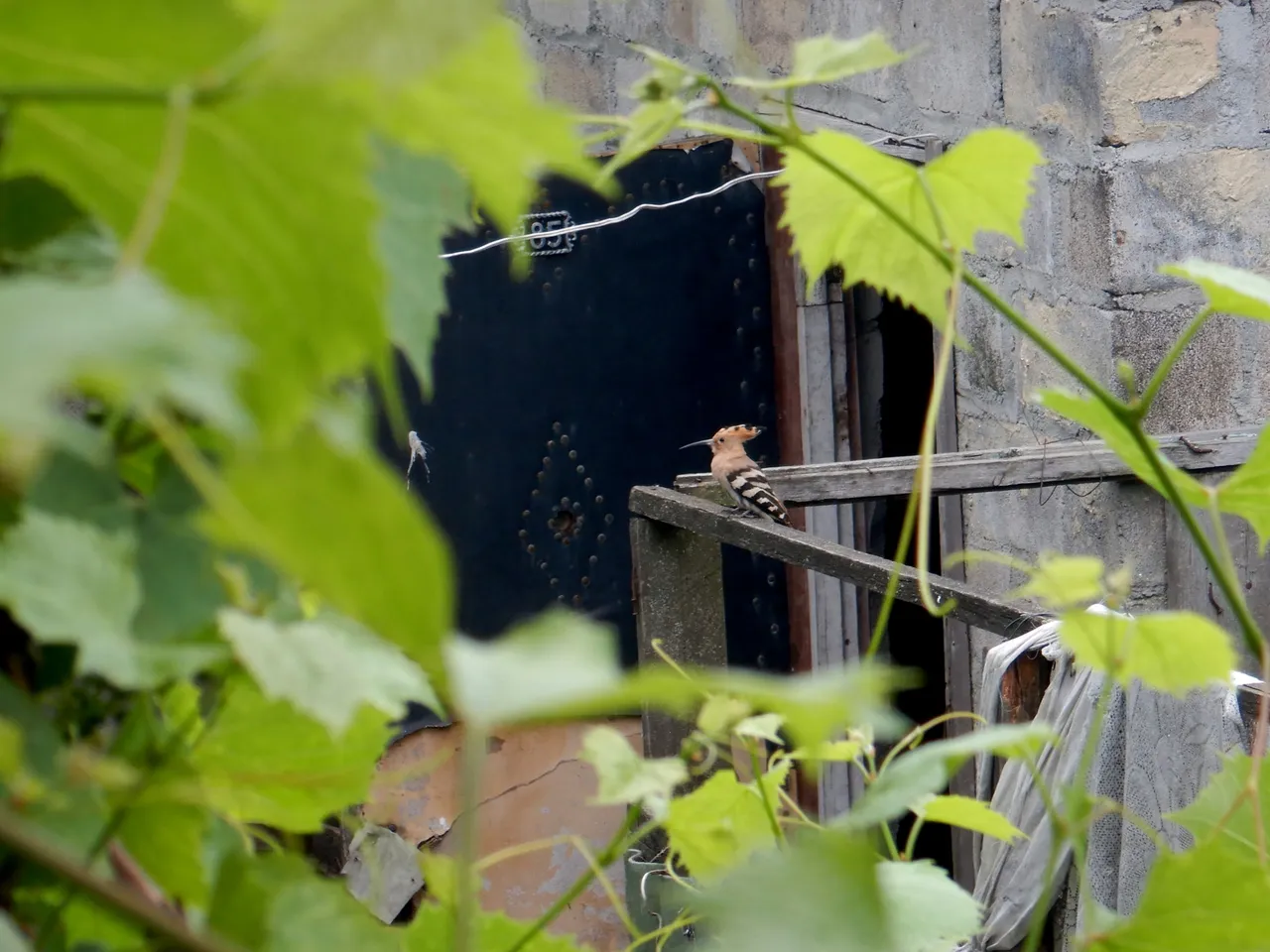
Just at the door of this poultry house there is a nest of our swallows with chicks, but I have never noticed any conflicts between birds
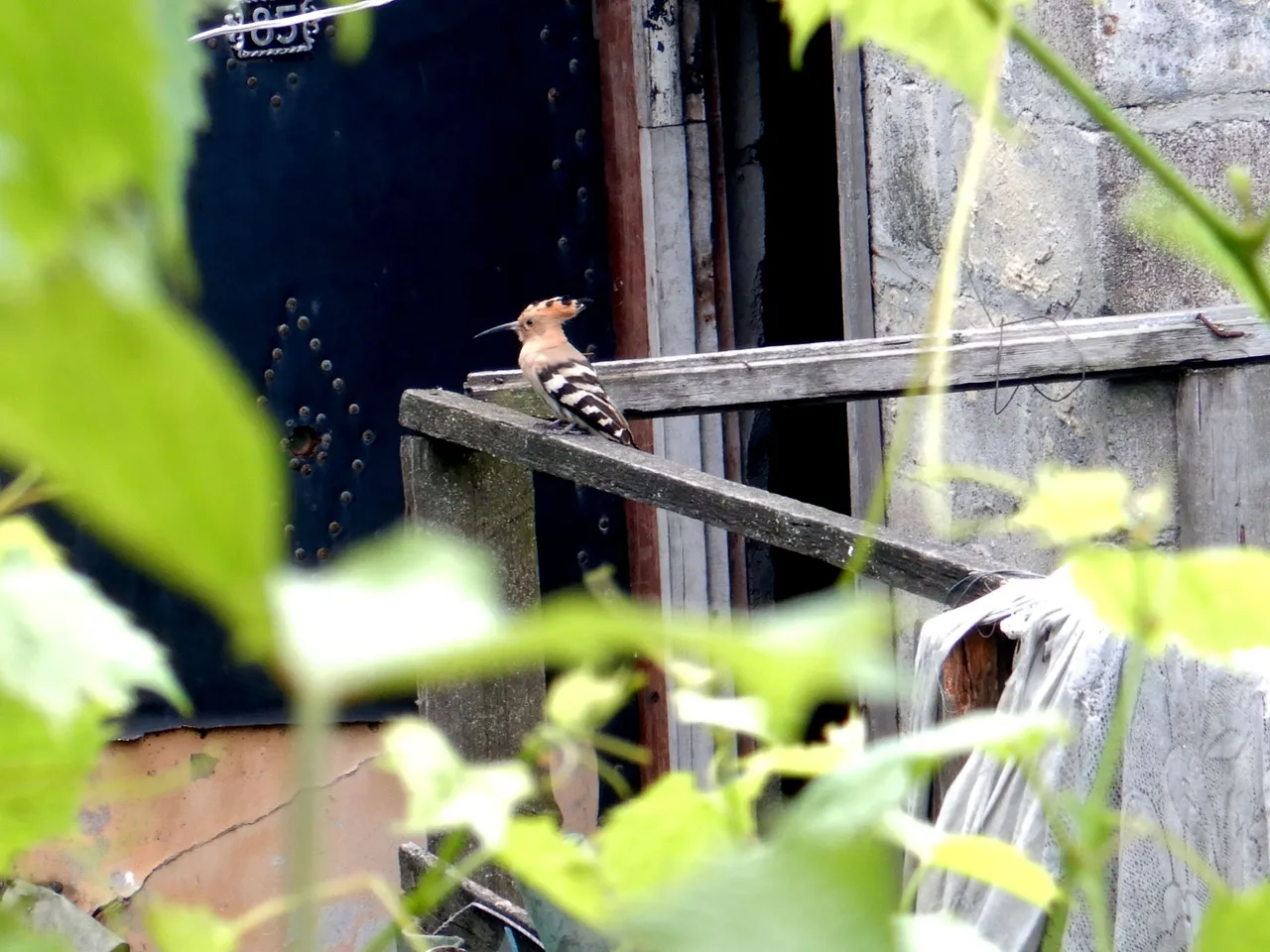
I have long noticed hoopoe visits to our bird yard with poultry, but before, I never managed to get close to them at the distance of a high-quality picture. Perhaps the hoopoes got used to the lack of aggression on our part and became a little bolder, allowing me to film their rest from about 15 meters.
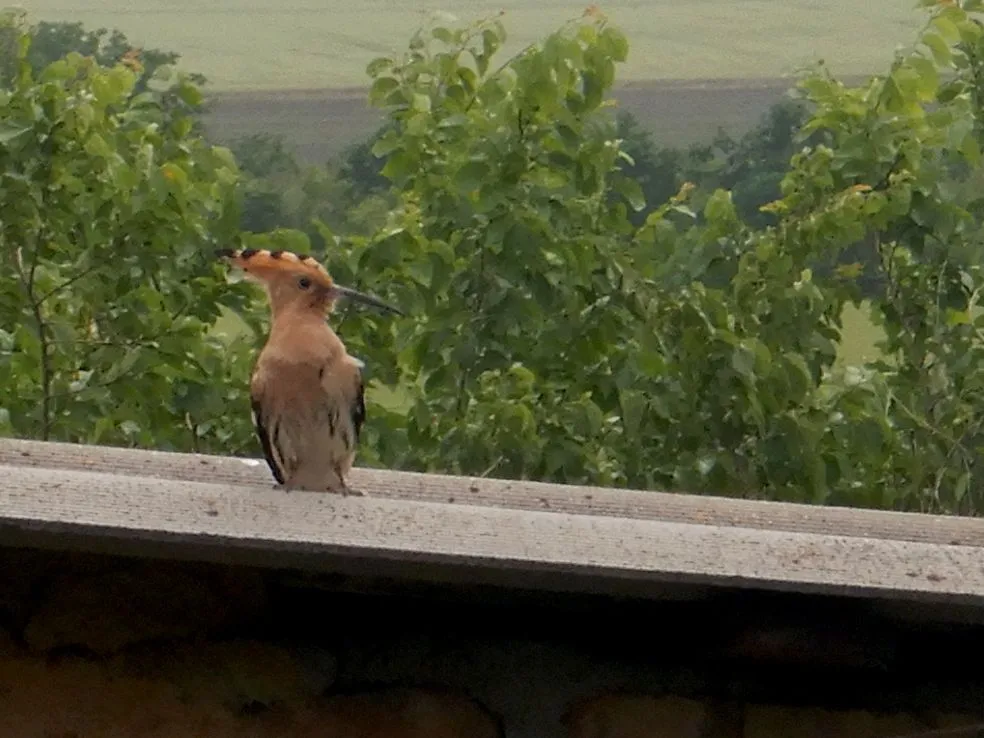
Although I behaved quietly and practically didn’t move, anyway, the bird bird got a little nervous when it noticed me, but didn’t immediately fly away, as it happened before

But the hoopoe decided to improve his appearance by straightening his feathers in order to remain in your memory as beautiful as possible))
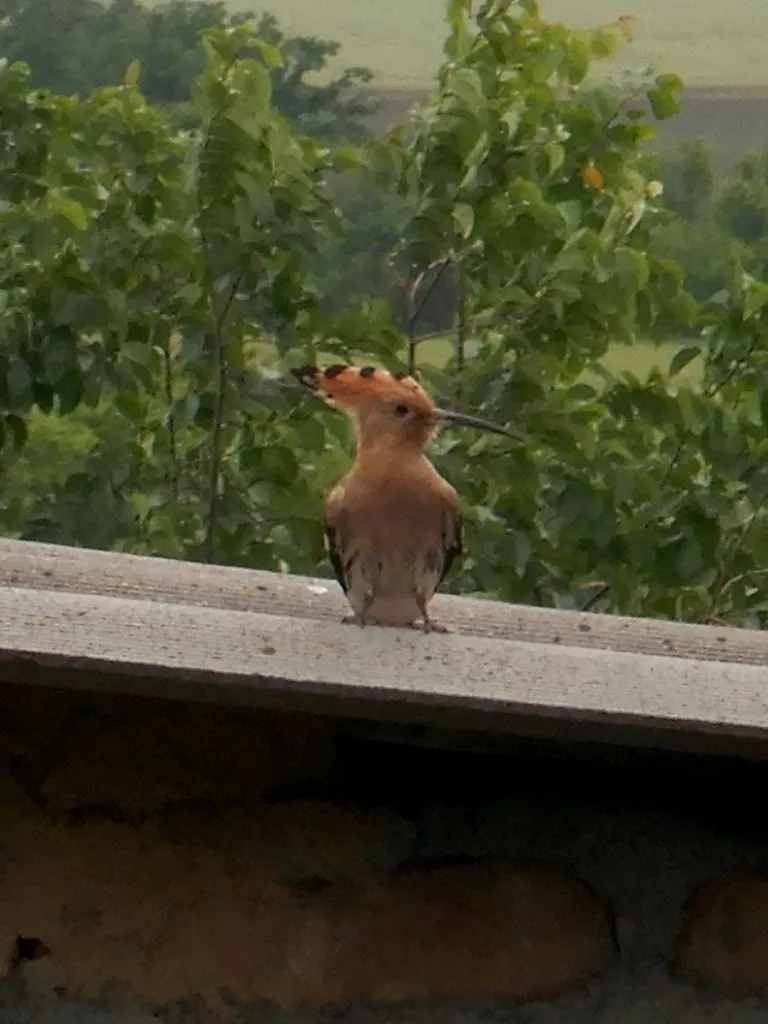 |  |
|---|---|
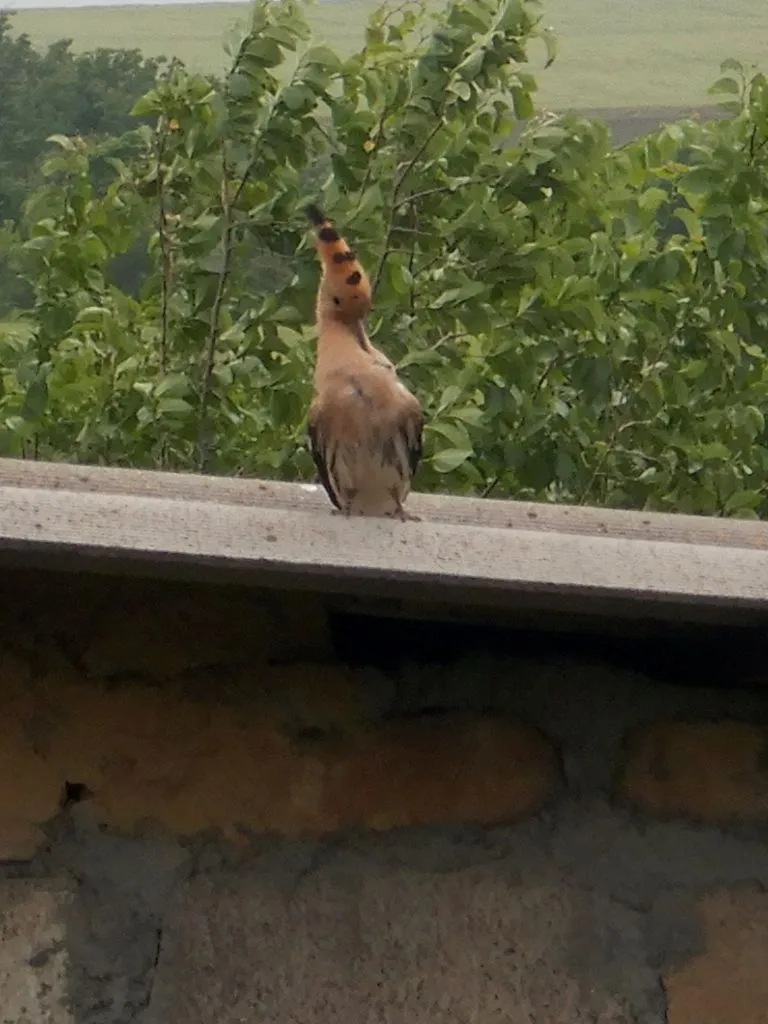 | 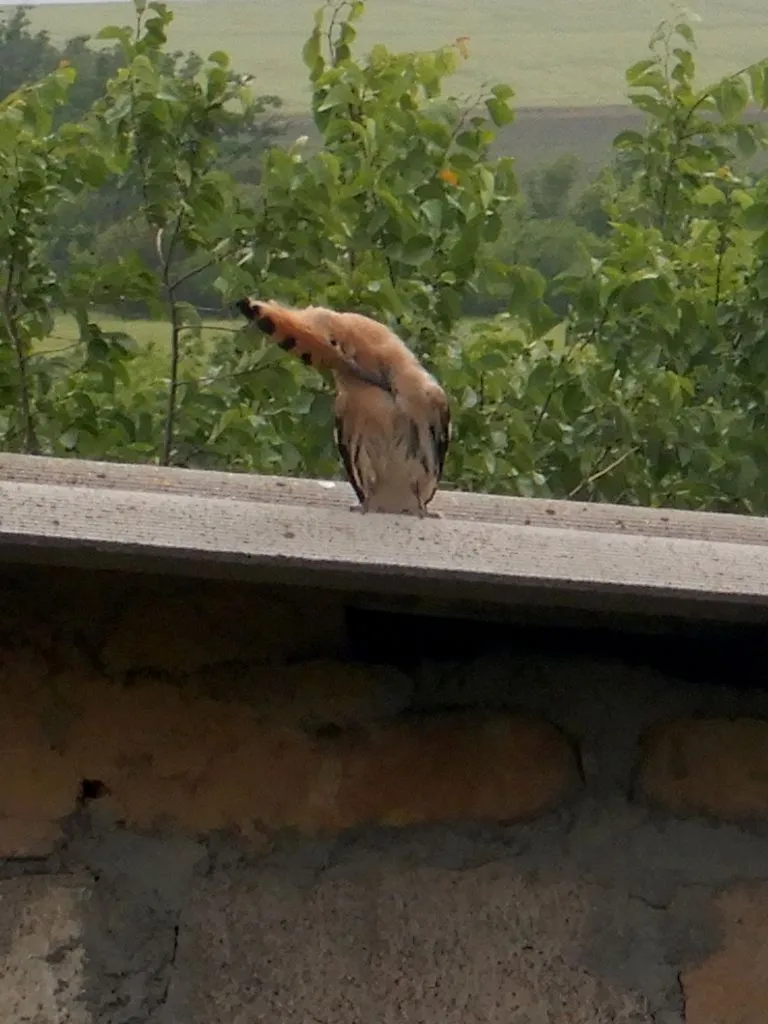 |
Judging by the behavior, the pictures show a male hoopoe, while the female is busy getting food for the chicks.
Usually they visit us in pairs, but only the male is visible, who is constantly vigilant so that a predator does not sneak up.
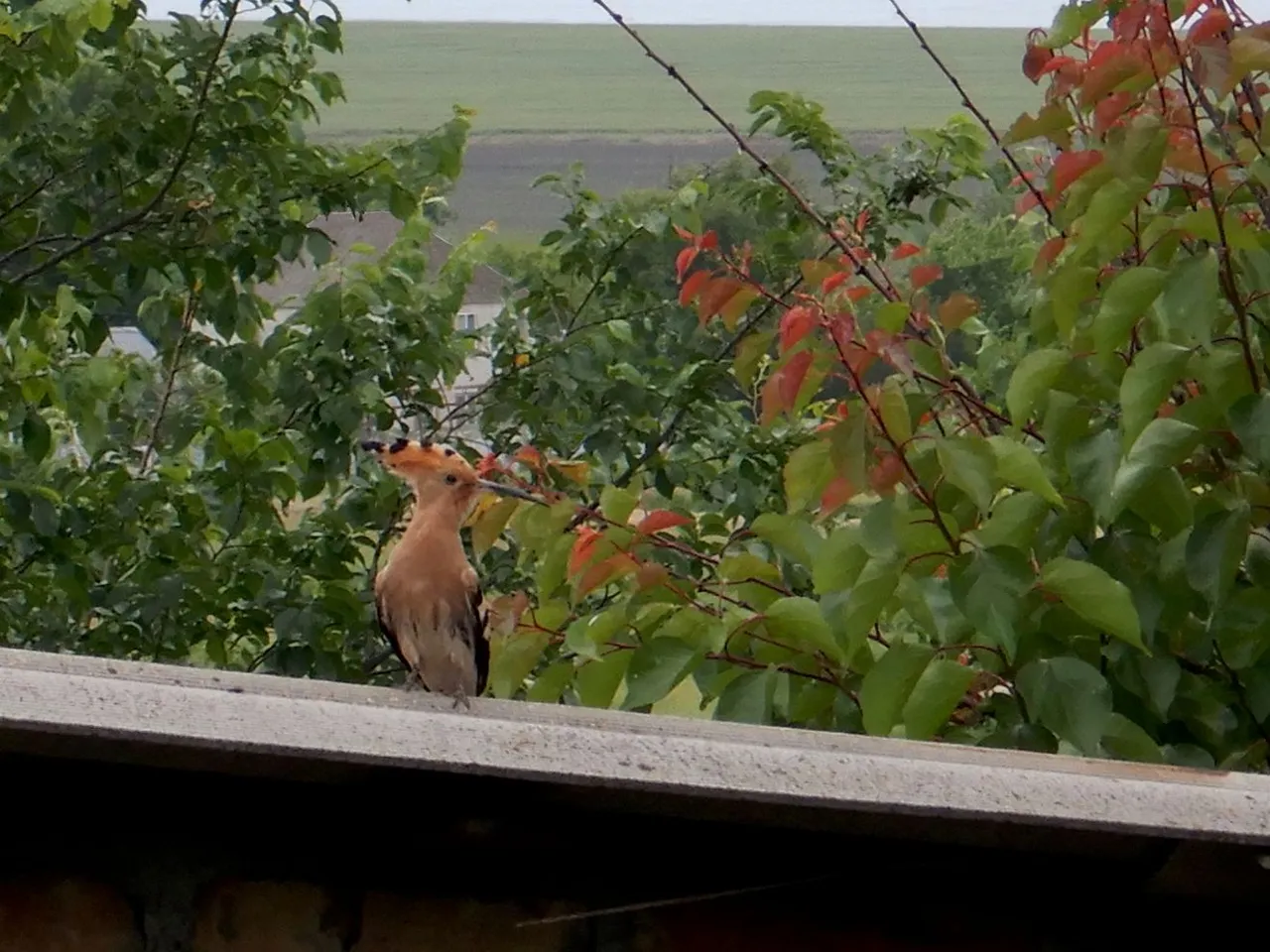
It is worth making some kind of noise or making a sharp movement, as the hoopoe instantly flies away, and after him, from the foliage, his female will definitely fly out.
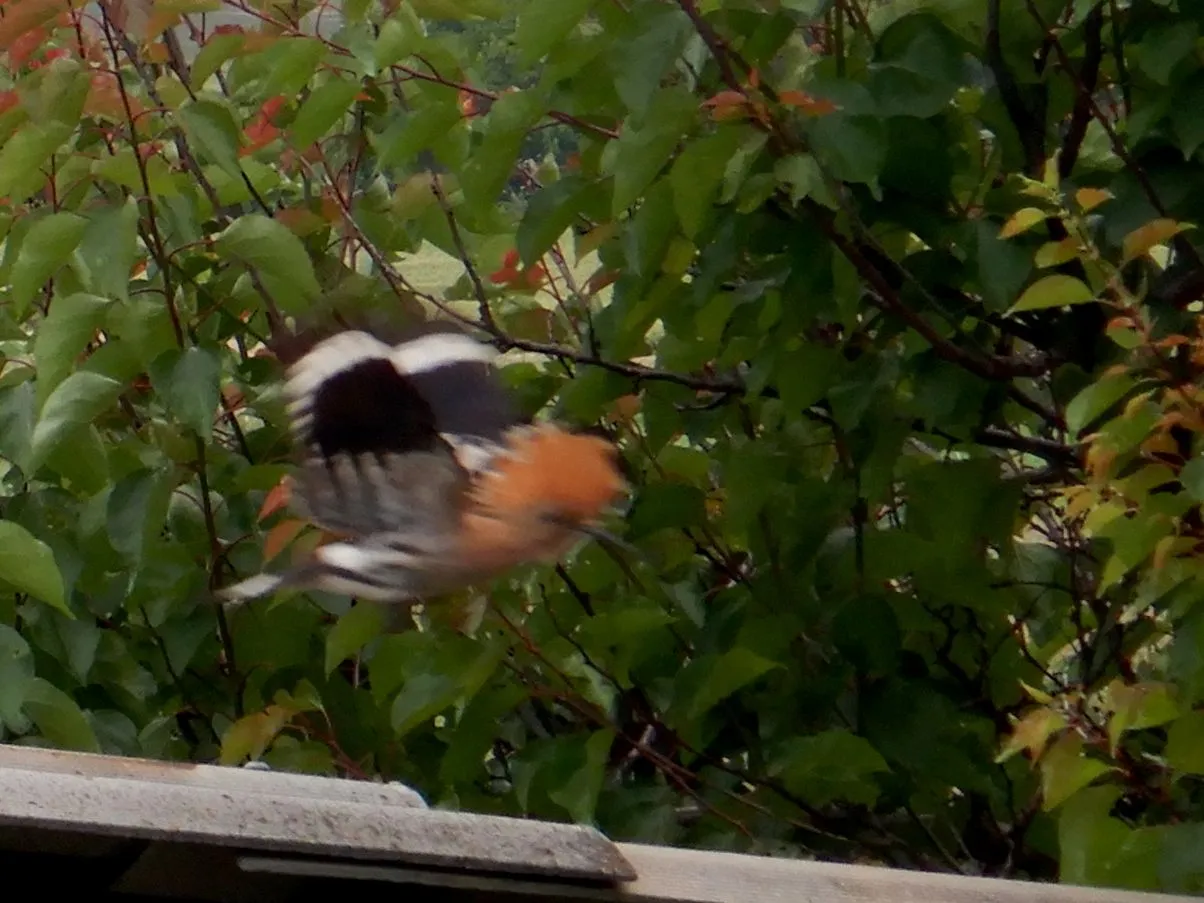
According to the International Union for Conservation of Nature, a rather numerous species. Despite the fact that the overall bird population has decreased in recent years, its dynamics does not currently allow this species to be considered vulnerable. In the International Red Book, hoopoe has the status of a taxon of minimal risk (LC category)
On the ground it moves quickly and nimbly, like starlings. In the event of a sudden alarm, when there is no way to escape, it can hide, clinging to the ground, spreading its wings and tail and lifting its beak up.
During the period of incubation and feeding of chicks, adult birds and chicks produce an oily liquid secreted from the coccygeal gland and having a sharp unpleasant odor. By releasing it along with the droppings on the alien, hoopoes try to protect themselves from medium-sized terrestrial predators - as a result of such adaptation, in the eyes of a person, the bird has gained a reputation as a very “unclean” creature. The flight of the hoopoe is slow, fluttering like a butterfly. However, it is quite maneuverable, and raptors rarely manage to grab a hoopoe in the air.
The hoopoe is not a flocking bird; the encountered group of hoopoes, as a rule, is a brood.
The basis of hoopoe nutrition is small invertebrate animals: insects, their larvae and pupae (May beetles, dung beetles, dead eaters, grasshoppers, butterflies, steppe fillies, flies, ants, termites), spiders, wood lice, centipedes, small mollusks, etc. Less commonly catches small frogs, lizards and snakes.
It feeds on the surface of the earth, usually in short grass or on bare soil. Possessing a long beak, it often picks in manure, garbage heaps or rotten wood, and makes shallow holes in the ground. Often accompanied by grazing cattle. The hoopoe's tongue is short, so it is sometimes unable to swallow prey from the ground - for this, the bird throws it into the air, catches it and swallows it. Large beetles are hammered on the ground, previously breaking into pieces.

banner and feather divider created by @barbara-orenya

Trade conveniently on HiveDex.io.
Thanks to @Mahdiyari!
